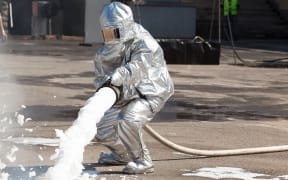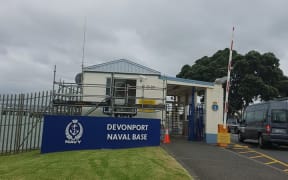Farms and lifestyle blocks beside Palmerston North Airport are being alerted to firefighting foam contamination in waterways.

Horizons Regional Council says the airport is cooperating with investigations over contamination from toxic foam. Photo: 123RF
Tests have found levels of contamination with the chemical PFOS at between three and 12 times safe drinking water guidelines in Mangaone Stream and its tributaries near the airport.
A second round of tests is beginning focused on the north side where contamination is more likely, and in test bores being drilled along the stream towards the Manawatu River, said airport chief executive David Lanham.
He visited 14 farms and lifestyle blocks on the north boundary yesterday, including two rural households that use bores for drinking water.
"Both of them are relaxed about it," he said.
"One of the neighbours has been there since 1993, so 25 years of using his bore, and he's happy to continue for now."
He expected to visit another 20 or so households today.
Bottled water would be provided to anyone who wanted it.
"Certainly no one's asked us for an alternative supply of water at this stage, but again, what we want to do is get out there as soon as we can and test their water samples."
The first round of test results have come back six months after the Environmental Protection Authority found PFOS foam at the airport, 12 years after it was banned in this country.
It still has not been disposed of. That was because it was complicated to do, Mr Lanham said.
The contamination was mostly from firefighting training in the 1970s and '80s, rather than more recently, he said.
Neighbours were "all fairly, I guess, accepting of the fact that we're talking about historical contamination... they appreciate that we're front-footing this, appreciative of the fact that we've got out there to see them, personally."
All seven waterway samples were above health guideline levels, as were all 23 soil and sediment samples at the airport.
Tests for a related chemical, PFOA, which is also banned in firefighting foam, found levels in water and soil well below the guidelines.
The city's water supply is from a deep aquifer and tested clear of PFOS in April. Ongoing tests were not needed, the city council said.
The regulator, Horizons Regional Council, said the airport had been co-operating with investigations.
The company that ran fire rescue at Palmerston North airport, Task Protection Services, declined to comment. It was issued a compliance order in March covering two other airports as well, Gisborne and Hawke's Bay.
A Gisborne airport spokesperson said while it has had PFOS foam on site since April 2017, after Air New Zealand increased the size and number of flights, it "has been contained at Gisborne Airport at all times, and was at no time released into the airport environment".
"Testing for its presence in the surrounding environment was therefore not necessary," the spokesperson said.
Hawke's Bay airport said it was still doing a desktop study of its foam use and no water or soil testing had been done yet.
PFOA levels at Palmerston North airport
- Soil - results ranged from 0.0010 to 0.15 milligrams per kilogram, versus a guideline for public open spaces of 10mg/ kg
- Water - results ranged from 0.019 to 0.063 μg/L or micrograms per litre, versus a guideline for public open spaces of 0.56 μg/L. The US EPA's guideline for PFOA in drinking water is much lower than New Zealand's, at 0.07 μg/L.




